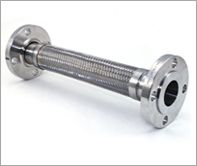The energy transformation sweeping across Ontario represents more than technological advancement—it signals a fundamental shift towards environmental responsibility and economic resilience. Property owners throughout the province increasingly recognise that traditional energy sources fail to meet long-term sustainability requirements. Clean energy solutions provide reliable alternatives that protect both financial investments and natural resources for future generations.
Ontario renewable energy initiatives continue gaining momentum as government policies align with public demand for cleaner power options. Solar panel installations multiply across residential and commercial properties, whilst battery storage systems enhance grid stability and energy security. These developments create opportunities for communities to reduce dependence on fossil fuels and achieve greater control over their energy destinies.
Ontario wind turbines dot the landscape from Thunder Bay to Cornwall, generating clean electricity that powers homes, businesses, and industrial facilities throughout the region. These towering structures capture natural wind currents and convert them into usable power, demonstrating how geographic advantages can support sustainable development. Rural communities particularly benefit from wind energy projects that provide economic opportunities whilst preserving agricultural land use.
Understanding Ontario’s Green Energy Revolution
- Policy Framework Supporting Growth: The provincial government established comprehensive renewable energy policies that encourage adoption across residential, commercial, and industrial sectors. Net metering programmes allow property owners to sell excess solar power back to the grid, creating financial incentives for system installation. Building codes now accommodate green technologies, streamlining permitting processes and reducing bureaucratic barriers that previously hindered development.
- Economic Benefits Drive Adoption: Clean energy investments generate substantial returns through reduced utility bills and increased property values. Commercial facilities report significant cost savings after installing solar arrays and wind systems, improving profit margins while reducing operational expenses. Manufacturing companies utilise renewable power to meet sustainability targets and attract environmentally conscious consumers who prioritise responsible business practices.
- Environmental Impact Considerations: Carbon footprint reduction remains the primary motivation for many property owners transitioning to sustainable energy sources. Solar panels produce zero emissions during operation, contributing to improved air quality in urban and rural areas. Wind turbines similarly generate clean electricity without releasing greenhouse gases, helping Ontario meet climate change commitments and international environmental agreements.
Solar Power Solutions Across the Province
- Residential Solar Applications: Homeowners install rooftop solar systems to reduce monthly electricity costs and increase energy independence from utility companies. Modern panels withstand harsh Canadian winters, maintaining efficiency despite snow coverage and extreme temperature fluctuations. Battery storage integration allows families to store excess power for evening use, maximising system benefits and providing backup power during outages.
- Commercial Solar Installations: Businesses deploy large-scale solar arrays on warehouses, office buildings, and manufacturing facilities to offset high energy consumption. Retail locations benefit from reduced operating costs that improve competitive positioning and customer pricing strategies. Agricultural operations utilise solar power for irrigation systems, barn ventilation, and livestock facilities, supporting farm productivity whilst reducing overhead expenses.
- Grid-Tie and Off-Grid Options: Connected systems feed excess power into the provincial grid, allowing property owners to earn credits for surplus generation. Off-grid installations serve remote locations where traditional power connections remain impractical or extremely expensive. Hybrid systems combine grid connectivity with battery backup, ensuring continuous power supply regardless of weather conditions or grid disruptions.
Wind Energy Development Throughout Ontario
- Commercial Wind Farms: Large-scale wind installations generate substantial amounts of clean electricity for distribution across the provincial power grid. These projects create employment opportunities during construction and operation phases, supporting local economies in rural regions. Wind farms typically lease agricultural land, providing farmers with additional income streams whilst maintaining crop production capabilities on surrounding areas.
- Small-Scale Wind Solutions: Property owners install residential wind turbines to supplement solar systems or provide standalone power generation. Modern turbines operate quietly and efficiently, addressing noise concerns that previously limited residential applications. Vertical axis designs work effectively in variable wind conditions, making them suitable for suburban and rural installations throughout the province.
- Siting and Regulatory Considerations: Wind turbine placement requires careful evaluation of wind resources, noise impacts, and setback requirements from neighbouring properties. Municipal zoning bylaws govern installation parameters, ensuring projects comply with community standards and environmental protection measures. Professional wind resource assessments determine optimal turbine placement and expected power generation for specific locations and geographic conditions.
Battery Storage and Grid Integration
- Energy Storage Technologies: Lithium-ion batteries store excess renewable energy for use during periods of high demand or low generation. These systems provide backup power during grid outages, maintaining critical operations for homes and businesses. Advanced battery management systems optimise charging cycles and extend equipment lifespan, protecting long-term investments in energy infrastructure.
- Grid Stabilisation Benefits: Energy storage helps balance supply and demand fluctuations that occur with variable renewable generation sources. Batteries can discharge power during peak demand periods, reducing strain on traditional generating facilities and improving overall grid reliability. This technology enables higher percentages of renewable energy integration without compromising system stability or power quality.
- Cost Considerations and Incentives: Battery storage costs continue declining as manufacturing scales increase and technology improvements reduce component expenses. Government rebates and financing programmes make these systems more accessible to residential and commercial property owners. Long-term savings from reduced utility bills often justify initial investment costs, particularly when combined with solar or wind generation systems.
Installation and Maintenance Requirements
- Professional Installation Standards: Qualified technicians ensure renewable energy systems meet Canadian electrical codes and safety requirements. Proper installation maximises system performance and protects warranty coverage that safeguards equipment investments. Licensed electricians handle grid connections and ensure compliance with utility interconnection standards that govern power export and safety protocols.
- Maintenance Best Practices: Regular system inspections identify potential issues before they impact power generation or cause equipment damage. Solar panels require minimal maintenance beyond periodic cleaning and vegetation management around installations. Wind turbines need annual inspections and lubrication services to maintain optimal performance and prevent costly repairs from neglected maintenance schedules.
- Performance Monitoring Systems: Digital monitoring platforms track energy production, system efficiency, and equipment status in real-time. These tools help property owners identify maintenance needs, optimise system performance, and maximise return on investment. Alert systems notify owners of potential problems, enabling prompt responses that prevent minor issues from becoming major repairs.
Financial Incentives and Rebate Programmes
- Government Support Programmes: Federal and provincial governments offer tax credits, rebates, and grants that reduce upfront costs for renewable energy installations. The Greener Homes Grant provides funding for energy audits and system installations that meet efficiency standards. Business investment tax credits support commercial renewable energy projects that contribute to provincial sustainability goals.
- Utility Company Incentives: Hydro companies throughout Ontario provide rebates for energy-efficient equipment and renewable energy installations. Time-of-use rates reward property owners who generate power during peak demand periods, increasing financial returns from solar and wind systems. Net metering programmes credit accounts for excess power exported to the grid, offsetting future electricity consumption charges.
- Financing Options Available: Equipment leasing programmes reduce initial capital requirements whilst providing immediate access to renewable energy benefits. Power purchase agreements allow property owners to install systems with minimal upfront costs, paying for electricity at predetermined rates. Traditional loans and lines of credit offer flexible financing terms that accommodate various budget constraints and cash flow requirements.
Future Outlook and Technology Trends
Emerging Technologies: Advanced solar panel designs achieve higher efficiency rates whilst reducing installation space requirements. Smart inverters provide enhanced grid integration capabilities and improve system monitoring functions. Energy management systems optimise power usage patterns and integrate with smart home technologies for improved convenience and efficiency.
Market Growth Projections: Industry analysts predict continued expansion of renewable energy adoption throughout Ontario as costs decrease and performance improves. Electric vehicle charging integration creates additional demand for residential and commercial renewable energy systems. Energy storage markets expect significant growth as battery costs decline and grid applications expand across the province.
Integration Challenges and Solutions: Grid modernisation supports higher levels of renewable energy penetration whilst maintaining system reliability and power quality. Smart grid technologies enable better coordination between distributed generation sources and traditional power plants. Advanced forecasting systems help utilities predict renewable energy output and optimise grid operations for improved efficiency and stability.
The following benefits demonstrate why property owners choose renewable energy systems:
- Reduced electricity bills through on-site power generation and net metering credits
- Increased property values from energy-efficient improvements and sustainable features
- Energy independence from utility rate increases and supply disruptions
- Environmental benefits through reduced carbon emissions and fossil fuel consumption
- Long-term warranty protection on equipment investments and system components
Ontario’s renewable energy landscape continues evolving as technology costs decline and environmental awareness increases amongst property owners and businesses. Solar panels and wind turbines provide reliable, clean power that reduces operating expenses whilst supporting provincial climate goals. Energy storage systems enhance these benefits by providing backup power and optimising energy usage patterns for maximum savings.
The transition to sustainable power sources requires careful planning, professional installation, and ongoing maintenance to achieve optimal results. Property owners who invest in renewable energy systems position themselves for long-term financial benefits and energy security. Consider consulting with qualified renewable energy professionals to explore options that best suit your specific requirements and location.
Featured Image Source: https://img.freepik.com/free-photo/solar-panels-red-tile-roof-with-clear-blue-sky-background_23-2151972757.jpg






